Wild Wilderness Drive-Through Safari (also called Wild Wilderness Safari, Gentry Safari, or the Gentry Zoo) is an unaccredited, family-owned zoo in Gentry, Arkansas. Although many visitors to the zoo claim that the animals “look happy” and well-cared for, Wild Wilderness Safari has been fined nearly $20,000 by the USDA for many severe, repeated violations of the Animal Welfare Act, such as failure to provide animals with clean food, water, and veterinary care, failure to provide animals with shelter from the elements, and having inadequate barriers and enclosures, resulting in animal escapes and serious human injuries. They also do things that no reputable zoo would do, like breeding white tigers, selling exotic animals as “pets”, and allowing young children to interact with large, unrestrained big cat cubs which are sold into the wildlife trade once they become too large to handle.
In 2002, Freddy Wilmoth, an operator of Wild Wilderness, plead guilty to “aiding and abetting” an illegal exotic animal killing ring by selling four of the park’s tigers to be butchered for their skin, meat, and body parts. Wilmoth was charged with a misdemeanor violation of the Endangered Species Act, sentenced with 6 months house arrest & 3 years probation, and ordered to pay $10,000 restitution to the US Fish and Wildlife Services’ “Save The Tiger” Fund. His arrest was part of “Operation Snow Plow,” a sting operation by the U.S. Fish & Wildlife Service on the illegal trafficking and slaughter of privately-owned big cats in the United States.
Wild Wilderness Safari also operates one of the more dangerous big cat cub “petting zoos” we’ve ever seen. Groups of customers, including very small children and infants, are let into a pen and encouraged to “play” with large, completely unrestrained big cat cubs, which are capable of causing serious injuries. These cubs are usually 8 to 12 weeks old, but as recently as 2013, the park was allowing guests to interact with 15-week-old lion cubs, far past the maximum age permitted by federal regulations.
The poor tiger cub in this video is trying to sleep, only to have a family with young children lean over him and grab at his paws and ears. The tired cub swats at the boy’s legs with his paws, and could have easily bitten/scratched the children while trying to defend himself. There’s also the risk that children could potentially harm the cubs by falling or stepping on them. Unsurprisingly, multiple guests have been injured by these cubs over the years.
In 2015, Wild Wilderness was cited by the USDA after a visitor was bitten by a lion cub and ordered to exhibit cubs more safely. The report noted that “attendants do not maintain any form of physical control over the cubs. Big cat cubs of this age are able to move quickly and can inflict harm on nearby persons.” According to an Incident Report filed by the Benton County Sheriff’s Office, the cub in this incident was 14 weeks old. The USDA bans public contact with cubs older than 12 weeks of age.
Despite the citations, Wild Wilderness continues to exhibit cubs in this dangerous manner. In May 2016, this woman posted photos of the bruises and bite marks she received from a tiger cub on Facebook:
In 2012, the U.S. Fish and Wildlife Service denied Wild Wilderness Safari a Captive Bred Wildlife Permit (CBW), which facilities are required to have in order to engage in interstate trade of captive-bred endangered species for conservation purposes. In their denial of the permit, the USFWS cited the zoo’s large number of chronic, “serious” Animal Welfare Act deficiencies, stating:
“In order to meet the issuance criteria, the applicant must have adequate facilities and show responsibility. Inspection records from the USDA… …indicate that you have had a large number of uncorrected, noncompliant items at your facility over the past two years. This is an indication that you are unable to maintain compliance with the requirements of the Animal Welfare Act. Since a number of the non-compliant items for animal care and housing are serious violations of the Animal Welfare Act, we are unable to find that you meet the issuance requirement of having adequate expertise, facilities, and resources to conduct your intended purpose under the CBW registration.”
The following is a partial list of Animal Welfare Act violations discovered at Wild Wilderness Drive-Through Safari by USDA inspectors:
April 8, 2015: Wild Wilderness was cited for allowing the public to play with unrestrained, 12 week old lion cubs after a visitor was bitten.
January 27, 2014: The USDA cited Wild Wilderness for failing to provide animals with adequate housing, veterinary care, and shelter from the cold. Two bobcats were housed in an insecure enclosure made of wire fencing and black plastic. There was an “excessive” amount of fecal material and rotten meat in this enclosure, and the water receptacle for the bobcats contained “brown-colored ice with fecal material and meat on top of the ice.” A piece of meat in the caracal enclosure was covered with “ice, straw, and dirt.” Multiple tropical primates were being housed outdoors in 24-degree temperatures and snow. The inspector noted that several animals were crouched down and huddled together and that many were currently under treatment after losing the tips of their digits to frostbite. A spider monkey had exposed bone visible on the tips of its toes, and several baboons were suffering from lesions. Ring-tailed lemurs were found outside of their enclosure chewing on a live electrical wire.
January 8, 2014: The USDA cited Wild Wilderness for failing to provide animals with adequate veterinary care and shelter from the cold. A spider monkey was missing the tips of most of his fingers, the skin was red and swollen around the remainder of the fingers, and bone appeared to be exposed on one remaining digit. A baboon chewed off the end of its injured tail in front of the inspector, who noted that the part that fell off “looked like a piece of dried meat.” Leon Wilmoth, current owner of Wild Wilderness, stated that the animals had suffered from frostbite and that he had not observed the injuries.
Note: Leon Wilmoth, the current owner of the zoo, has dismissed the severity of these reports by claiming that the injured primates constituted only a “small number” of animals living at the park. In 2015, he told a local news station, “If you had 4,000 dogs, would all the dogs be healthy and perfect at the same time, or would there be a minute number that had a medical problem?”
March 7, 2013: A 7 month old lion cub was found dead in his cage after being strangled by the dog collar he was wearing. The inspector wrote:
“A juvenile male lion, approximately seven months old, was found dead in an enclosure by a facility representative approximately one and a half weeks prior to this inspection. The facility representative stated that he had placed a collar on the animal for the purpose of leading the animal. He also stated that he was doing this for enrichment purposes. He left the animal in the enclosure, returned a short time later, and the animal was dead. He stated it looked like the animal was strangled by the collar. No necropsy was performed. All animals must be handled in a manner that does not cause any harm to the animal.”
Wild Wilderness was also cited for unsanitary conditions in areas where animal food was stored, and for failure to have adequate barriers and staff to prevent zoo guests from coming into unsupervised contact with animals.
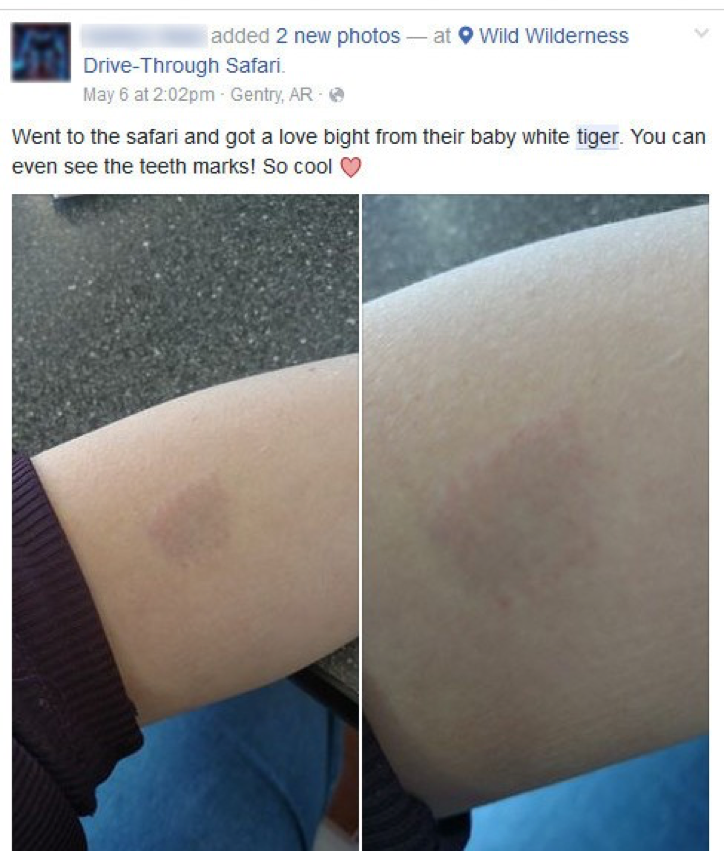
January 23, 2012: The USDA cited Wild Wilderness for failing to provide animals with sufficient enclosures. The enclosure for servals had rotted resting boards, leaving broken areas and jagged points. Five enclosures had an excessive accumulation of waste, and four enclosures contained dirty water receptacles. A rhesus macaque was running free in the drive-through area. The licensee said that three primates were loose at that time.
September 1, 2010: The zoo was cited for failing to provide sufficient barriers in four areas of the drive-through portion, including the enclosure housing clouded leopards. An excessive number of flies were in six enclosures that had food scraps on the floor. Food in the food-storage areas wasn’t properly protected, and food requiring refrigeration wasn’t stored appropriately.
February 12, 2008: The USDA issued repeat citations to Wild Wilderness for continuing to fail to provide clean drinking water to animals. It was also cited for housing two juvenile lions in shelters that were not large enough for the cats to stand or turn around in. At the time of the inspection, it was 26 degrees and there was no bedding in the shelters for the lions.
September 7, 2007: The USDA cited Wild Wilderness for failing to provide enclosures with sufficient barriers. The enclosure housing big cats didn’t have a barrier to prevent cars from driving next to it on one side. The enclosure housing black bears wasn’t sufficient to contain the bear cub, whom the exhibitor admitted had climbed up and over the fencing. Four enclosures housing cougars or leopards had shelters too small for the animals to stand up in. The enclosure with two bobcats didn’t have an enclosure big enough for both animals, and the food receptacle for the cats “contained a liquid and solid mixture with numerous fly larvae and emitted an unpleasant odor.” There were multiple dirty water receptacles, and at least four had a green discoloration on the surface.
May 4, 2007: The USDA cited Wild Wilderness for failing to provide a bobcat, who was circling when walking and bumping into support posts, with veterinary care.
October 24, 2006: The USDA cited Wild Wilderness for failing to provide animals with adequate shelter. The big cats were given blue barrels for shelter with one end completely open, which were not large enough for the animals to turn around in.
November 6, 2004: Two visitors to Wild Wilderness stopped their vehicle at the tiger cages and climbed out of the car to pet an adult tiger through a cage. The tiger bit the middle finger of one of the visitors, stripping the flesh from her finger. The owners of the safari refused to comment on the woman’s injury or provide safety tips for visitors attending the park.
October 9, 2004: A woman being paid to feed animals at Wild Wilderness had her arm pulled into a chimpanzee enclosure, and the chimpanzee “bit off much of her hand, including two fingers.” She filed a lawsuit against the park, and the case was later settled for an undisclosed amount.
April 6, 2004: The USDA cited Wild Wilderness for failing to have sufficient public barriers around an enclosure with two large black bears and around the enclosure for the Arctic foxes, failing to have sufficient, safe shelter for two black bears whose shelter was rusted and falling apart, and for failing to provide the rhesus macaques with a sufficient enclosure, as several were running free in the drive-through area. The zoo was also cited for failing to provide animals with clean water.
April 11, 2003:. Wild Wilderness was cited for failing to provide secure enclosures for big cats. The enclosure for bobcats had a rusted vertical support pole, and a wooden den box was unstable and in disrepair. The compound for lions and tigers had a gap under the enclosure fence, and the perimeter fence in the back portion of the park had a large gap between the ground and the fence.
January 14, 2003: The USDA issued repeat citations to Wild Wilderness for failing to have sufficient barriers to keep the public at a distance from the animals and failing to provide safe and sufficient enclosures. Several rhesus macaques were running free in the drive-through area, the enclosure for tigers had sharp edges from a torn tin roof, and the chain-link fence was loose in two places in the enclosure for the spotted leopards.
June 20, 2002: Ross Wilmoth agreed to pay a $10,000 fine to the USDA to settle charges of Animal Welfare Act violations, including providing animals with inadequate care, having inadequate barriers, having cages in disrepair, and having cages that were too small.
June 5, 2002: The USDA cited Wild Wilderness for failing to have a complete program of veterinary care. The facility was also issued repeat citations for failing to have sufficient barriers to keep the public at a distance from the animals and failing to provide safe and sufficient housing. The enclosures for leopards had wire extending into the cages and rusted support poles, several rhesus macaques were running free in the drive-through area, and the enclosure for cougars had a broken support pole.
February 25, 2002: According to the St. Louis Post-Dispatch, following a U.S. Fish & Wildlife investigation Wild Wilderness operator Freddy Wilmoth plead guilty to the illegal transport of four adult tigers after selling the big cats to a facility in Missouri where they were shot inside a trailer. The new owners had intended to sell the hides, which could be worth up to $20,000 each.
January 22, 2002: Two workers at Wild Wilderness were mauled by cougars as they were trying to transfer them to a larger cage. One worker sustained multiple bites to an arm and a leg and was airlifted to a hospital. The other worker was bitten in the face and transported to the local hospital.
October 30, 2001: The USDA cited Wild Wilderness for failing to provide a public barrier around the enclosure for lion cubs. Pens in the drive-through area had no supervision to stop the public from having direct contact with the animals.
November 2, 2000: The USDA cited Wild Wilderness for failing to provide a barrier between the public and the primary enclosure holding lemurs. Members of the public were observed entering one enclosure without an attendant supervising. It was also cited for failing to provide adequate primary enclosures. During the inspection, a ruffed lemur was loose with the public after she was let out of the enclosure by a member of the public. The zoo was also cited for having unsafe enclosures for the black jaguars, lion, and tiger.
May 6, 1999: The USDA cited Wild Wilderness for failing to provide sick animals with adequate veterinary care, and for failing to correct several noncompliant items found during previous inspections.
January 27, 1999: A USDA news release announced that Wild Wilderness had agreed to a consent decision and order regarding past violations of the AWA and agreed to pay a civil penalty of $8,000 and to hire an additional employee as well as correcting deficiencies in its acquisition records.
September 15, 1998: Ross Wilmoth paid a $4,000 fine to the USDA to settle citations, including for having inadequate shelter, piles of animal waste, an ineffective pest-control program, and dirty bowls, food, and cages.
July 16, 1996: The USDA cited Wild Wilderness for failing to keep accurate records of animal inventory. It was also cited for housing three young tigers in a pen with a fence that was only 6 feet tall and lacked a roof.
1992: Ross Wilmoth, owner of Wild Wilderness, was fined $300 by USDA $300 for housing animals in improper cages.
1988: The USDA issued a warning to Ross Wilmoth for selling a cougar cub who had ringworm.
Don’t forget the heartbreaking story of Samantha the cougar, who was born at Wild Wilderness in 1992 and used as a petting zoo cub before being sold for $400 to a family of zoo visitors, who felt sorry for her and thought they could raise her as a “pet.” After several months of heartbreak, Samantha’s owners fortunately agreed to surrender her to the Performing Animal Welfare Society’s PAWS sanctuary, where she was rehabilitated and lived a long, happy life until passing away at the ripe old age of 22. Wild Wilderness is clearly still breeding cats and are certainly still selling them, but I don’t think it’s as “open” as it was in the 1990s.
Archived Articles:
Facility that inspired new primate law has past violations (Associated Press, 2015)
Primate possession law passes governor’s desk (KTHV, 2015) Note: While Leon Wilmoth claims in this article that Wild Wilderness is ZAA-accredited, the ZAA website shows that it is not, and never has been.
Park owners deny negligence when a chimpanzee bit off a woman’s hand(Northwest Arkansas Democrat Gazette, 2005)
Suit settled over chimpanzee bite (Northwest Arkansas Democrat Gazette, 2005) Note how the safari claims that their chimp “is not a wild animal.” There are multiple photos taken by zoo visitors of the public, including children, petting and feeding wolves through the enclosure fence because they’re “friendly.”
Woman is injured by tiger in Gentry (Northwest Arkansas Democrat Gazette, 2004) (scroll down, 2nd article on page)
Cape couple pleads guilty in tiger case (Southeast Missourian, 2002) (details Wilmoth’s involvement in the Operation Snowplow crimes)
More charges expected in Missouri tiger case (Associated Press, 2002)
Two injured in attack at drive-through safari (Associated Press, 2002)
Arkansas Man Sentenced to 6 Months Home Confinement, 3 Years Probation and Ordered to Pay $10,000 Restitution for Brokering Sale of Federally-Protected Tigers (USFWS press release, 2002)
Finally, a whole bunch of assorted news articles from 2002, most dealing with the illegal tiger sale and USDA fines for poor conditions at the zoo.
Documentation:
PETA seeks to block renewal of Safari’s captive-bred permit
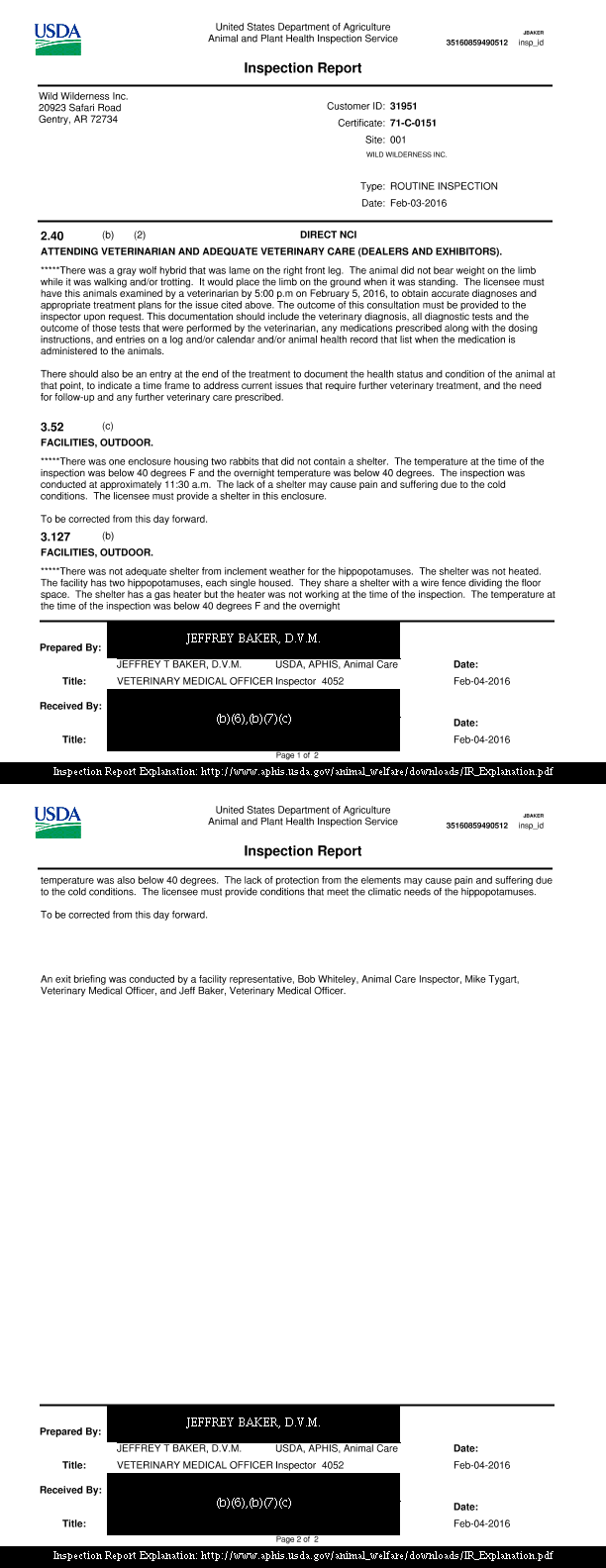
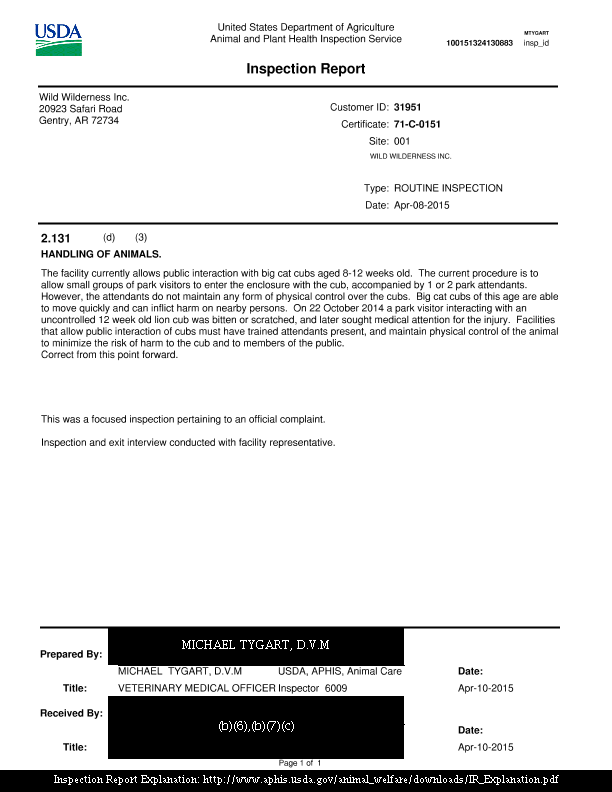


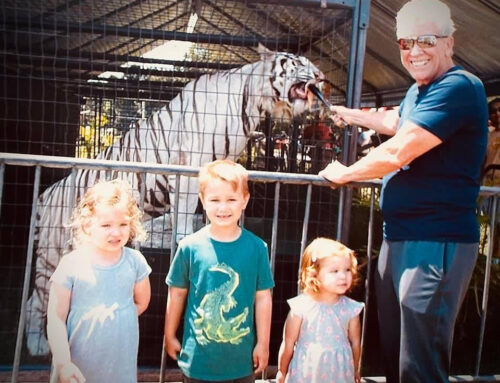
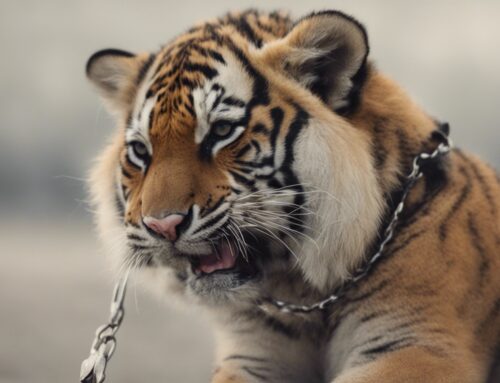

i use to work for the safari, not to mention the animals were unhappy, pacing in there cages, food was thrown over the cages into the dirt and so on but the employees only getting paid $5 and hour to work with exotic animals because they claimed it was farm work. I have worked on farms and never once did we have any lions or bears. I also witnessed employees of the park driving around the town of Gentry with lion cubs in there cars. The Safari should be shut down i will never support them and what they do.
I have a picture of me and a friend from last year petting a cub. It was in a pen playing with a dog. They told us not to take pictures and post them online. Not to tag them in it. And not to tell them where we did this at.